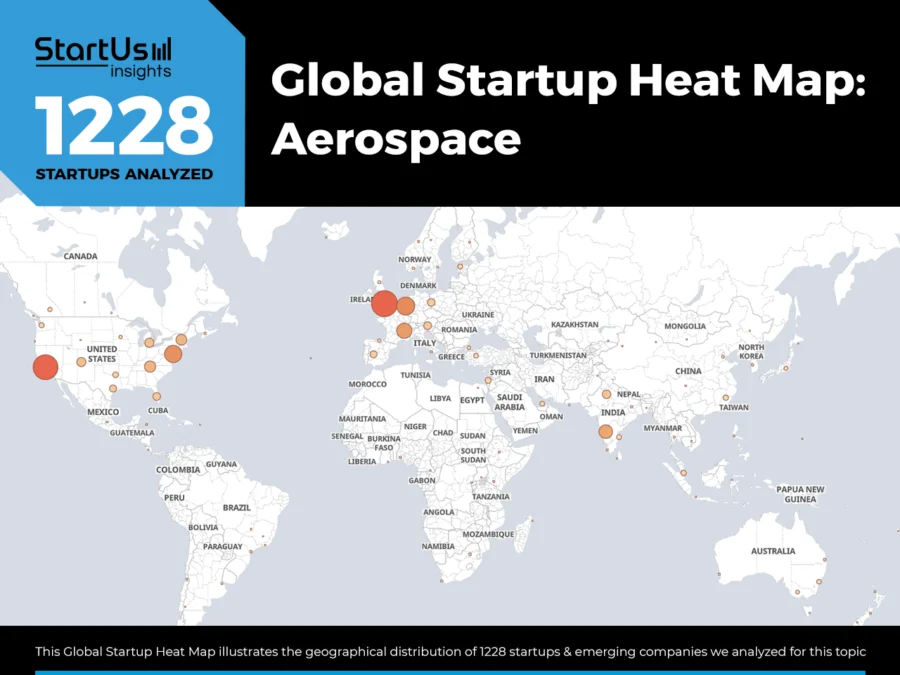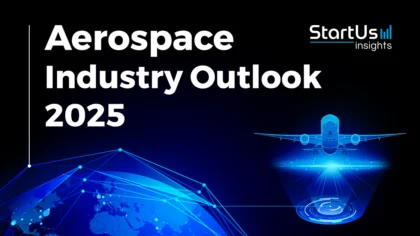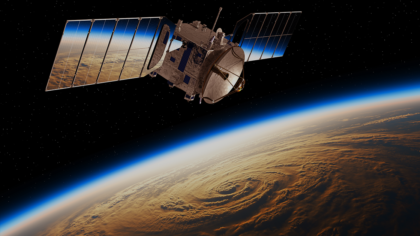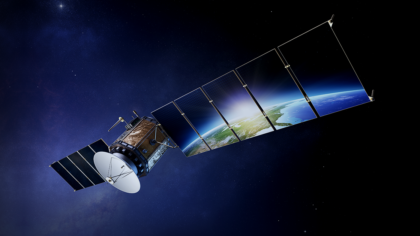Accelerate Productivity in 2025
Reignite Growth Despite the Global Slowdown
What are the Top Aerospace Trends (2026)?
- AI and ML Expansion – Artificial intelligence (AI) enhances operational efficiency across design, maintenance, and navigation. AI reduces unscheduled maintenance events by 30%, optimizes flight paths, and supports autonomous operations.
- Sustainable Aviation – Sustainable aviation fuel (SAF) reduces lifecycle CO₂ emissions by up to 80%. ReFuelEU mandates minimum SAF blending, while companies like Neste expand production.
- Blockchain & Supply Chain Resilience – Aerospace supply chain disruptions rose 35% year-over-year. This prompts the adoption of blockchain for transparency, part traceability, and counterfeit mitigation. Blockchain-led platforms digitize certification and emissions tracking, while smart contracts and IoT cryptoseals improve logistics.
- Autonomous Aircraft Technology – Autonomous aviation addresses crew shortages, improves safety and enables persistent flight. AI-guided systems handle full-flight operations, while sensor fusion ensures real-time awareness. The autonomous aircraft market is expected to grow at a 22.1%compound annual growth rate (CAGR), reaching USD 54.7 billion by 2034.
- Immersive Technologies – Virtual and augmented reality reduce aerospace training time by up to 75% and enhance pilot, astronaut, and technician readiness. Digital twins simplify design workflows and project management. XR systems aid in emergency response training, maintenance, and remote engineering collaboration.
- Cybersecurity Innovations – Cyberattacks in aerospace surged 600% between 2024 and 2025, prompting new regulations and the adoption of Zero Trust frameworks. AI and quantum-safe encryption counter rising threats. Platforms offer automated compliance, endpoint protection, and secure mission data verification across defense and civil systems.
- Advanced Materials and Manufacturing – Each kilogram of advanced composite material cuts up to 25 tons of CO₂ emissions over an aircraft’s lifespan. Carbon fiber reinforced polymers (CFRPs) make up over 50% of new aircraft structures, while digital manufacturing and smart materials enable predictive maintenance and reduced waste.
- Advanced Air Mobility – Urban air mobility and electric vertical takeoff and landing (eVTOLs) promise to ease congestion in megacities. By 2045, 30 000 eVTOLs may support 3 billion passengers annually. Solid-state batteries, hypersonic travel, and drone delivery systems are transforming regional mobility.
- Additive Manufacturing Transformation – Aerospace and defense additive manufacturing is expected to reach USD 9.87 billion by 2029, growing at a 17.4% CAGR. Metal 3D printing consolidates parts, lowers weight, and reduces costs. Innovations in polymers, liquid crystal technologies, and electron beam methods enable faster, stronger, and more complex component fabrication for engines, satellites, and boosters.
- Commercial Space & Defense Acceleration – The space economy is on track to reach USD 1.8 trillion by 2035. Satellite launches, reusable rockets, and defense investments are driving this growth. LEO satellite constellations, space-based connectivity, and HAPS platforms are expanding access and coverage.
Read on to explore each trend in depth – uncover key drivers, current market stats, cutting-edge innovations, and leading aerospace innovators shaping the future.
Frequently Asked Questions
1. What is the next big thing in aerospace?
The next big thing in aerospace is hypersonic flight technology operating at speeds exceeding Mach 5, which is reshaping air travel by cutting intercontinental journey times. Meanwhile, satellite systems, autonomous AI applications, and hydrogen-fueled aircraft continue to drive innovation across the aerospace sector.
2. What is the future of the aerospace industry?
The aerospace industry is shifting toward sustainable aviation with electric and hybrid propulsion systems. At the same time, advanced air mobility is expanding through eVTOL aircraft and air taxis. Besides, commercial space exploration and tourism are growing steadily. The global aerospace market is predicted to reach USD 791.78 billion by 2034.
Methodology: How We Created the Aerospace Trend Report
For our trend reports, we leverage our proprietary StartUs Insights Discovery Platform, covering 5M+ global startups, 20K technologies & trends plus 150M+ patents, news articles, and market reports.
Creating a report involves approximately 40 hours of analysis. We evaluate our own startup data and complement these insights with external research, including industry reports, news articles, and market analyses. This process enables us to identify the most impactful and innovative trends in the aerospace industry.
For each trend, we select two exemplary startups that meet the following criteria:
- Relevance: Their product, technology, or solution aligns with the trend.
- Founding Year: Established between 2020 and 2025.
- Company Size: A maximum of 200 employees.
- Location: Specific geographic considerations.
This approach ensures our reports provide reliable, actionable insights into the aerospace innovation ecosystem while highlighting startups driving technological advancements in the industry.
Innovation Map outlines the Top 10 Aerospace Trends & 20 Promising Startups
For this in-depth research on the Top Aerospace Trends & Startups, we analyzed a sample of 1200+ global startups & scaleups. The Aerospace Innovation Map created from this data-driven research helps you improve strategic decision-making by giving you a comprehensive overview of the aerospace industry trends & startups that impact your company.
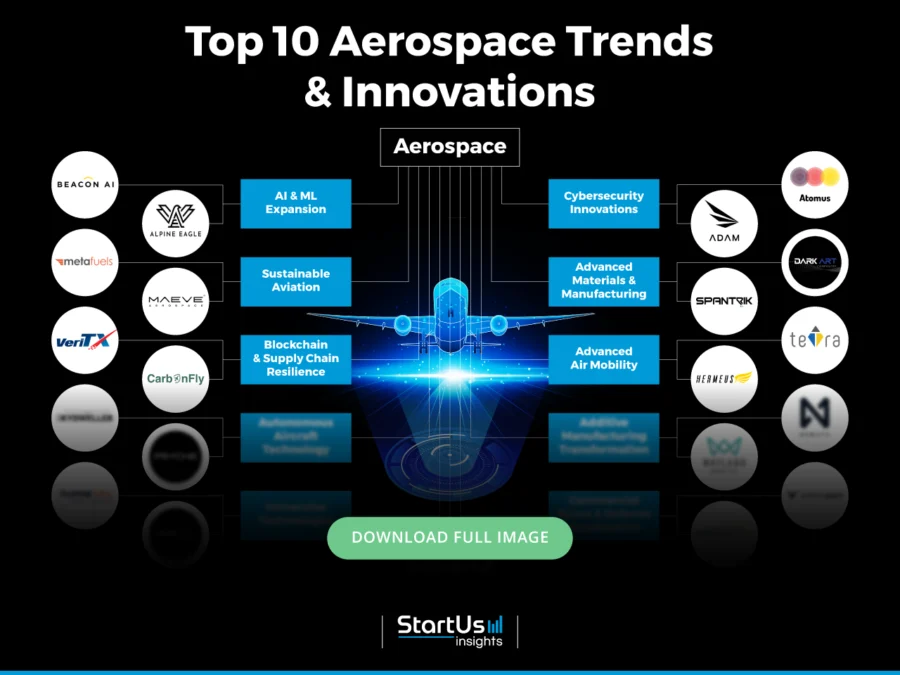
Tree Map reveals the Impact of the Top 10 Aerospace Trends
Deep tech and sustainability-focused innovation are reshaping the aerospace sector. AI and machine learning (ML) support predictive maintenance, optimize flight routes, and improve design simulations. At the same time, cybersecurity tools protect avionics systems and critical infrastructure from rising digital threats.
Additive manufacturing is changing how components are produced. It enables lighter structures and shortens prototyping timelines. Besides, advanced materials allow for improving fuel efficiency and extending durability.
Immersive technologies such as augmented and virtual reality are enhancing training and enabling remote design collaboration across global teams. Sustainable aviation continues to evolve through alternative fuels and electric propulsion systems.
Advanced air mobility is building the foundation for urban flight networks. Meanwhile, blockchain integration is improving transparency and responsiveness in aerospace supply chains. Moreover, commercial space and defense programs are expanding orbital operations and advancing next-generation defense capabilities.

Global Startup Heat Map covers 1228 Aerospace Startups & Scaleups
The Global Startup Heat Map showcases the distribution of 1200+ exemplary startups and scaleups analyzed using the StartUs Insights Discovery Platform. It highlights high startup activity in the United States, followed by the United Kingdom. From these, 20 promising startups are featured below, selected based on factors like founding year, location, and funding.
Want to Explore Aerospace Innovations & Trends?
Top 10 Aerospace Innovation Trends for 2026
1. AI and ML Expansion: Cut Unscheduled Maintenance by 30%
Artificial intelligence is reshaping aerospace by automating routine tasks and minimizing human error. Technologies like machine learning and computer vision reveal hidden patterns in complex data.
AI optimizes fuel use by improving flight paths and monitoring engine performance. It also simplifies maintenance planning, reducing unscheduled maintenance events by 30%. These delays cost money and disrupt hundreds of flights.
Airbus uses AI-powered computer vision on final assembly lines. The system automatically detects and timestamps major tasks while analyzing images at high speed. This approach reduces tracking errors and increases assembly precision.
Moreover, AI accelerates problem-solving and supports critical decisions during autonomous flight. It complements human pilots by enhancing situational awareness and enabling coordination between manned and unmanned systems.
Industry forecasts show growth ahead. Analysts expect the global aerospace AI market to reach USD 34.14 billion by 2033, with a compound annual growth rate of 43% from 2025 to 2033.
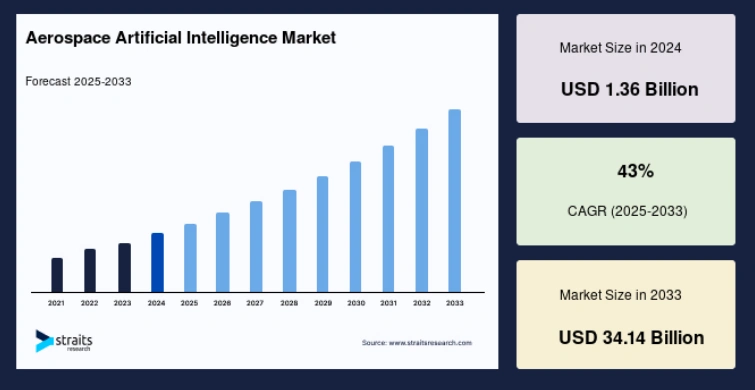
Credit: Straits Research
Alpine Eagle creates Sentinel Airborne Counter-UAS System
German startup Alpine Eagle builds the Sentinel Airborne Counter-UAS System, an air-to-air network for detecting, classifying, and intercepting unmanned aerial systems, including small drones and loitering munitions.
It uses onboard AI and edge computing to operate in contested environments. A single operator controls a swarm of airborne sensors and interceptors. The system merges active and passive sensing to improve target recognition. Its elevated line of sight detects low-flying drones hidden from ground-based systems.
Alpine Eagle enables flexible protection for static and mobile assets. It offers high mobility, adaptive airborne positioning, and built-in redundancy to maintain performance under varied conditions.
Beacon AI offers an AI-enabled Co-pilot
US-based startup Beacon AI leverages deep learning to improve flight safety for commercial and private aviation operations. The startup’s AI assistant works in conjunction with the pilot and acts as a safety net and advisor for them.
Through this, Beacon AI reduces human errors during flights and improves overall operational efficiency. This enables pilots to conduct safer flights and airline operators to optimize resource utilization.
2. Sustainable Aviation: SAF Cuts Lifecycle CO₂ Emissions by Up to 80%
Aviation contributes 2.05% of global CO₂ emissions, releasing around 882 million tonnes in 2023. Its environmental footprint extends beyond this, as non-CO₂ impacts often double or quadruple the sector’s climate burden.
To tackle this challenge, the European Union introduced the ReFuelEU Aviation Initiative. It sets clear targets for blending SAF: 2% by 2025, 6% by 2030, 34% by 2040, and 70% by 2050.
At the same time, the International Air Transport Association (IATA) has committed to reaching net-zero emissions by 2050, counting on SAF to provide 65% of the needed reductions.
SAF offers an immediate route to decarbonize aviation. Depending on how it’s made, it reduces lifecycle CO₂ emissions by up to 80% compared to traditional jet fuel.
Several production methods support this effort. HEFA, the most commercially mature approach, converts vegetable oils, waste oils, or animal fats using hydrogen. Fischer-Tropsch processes carbon-rich materials into synthesis gas, then refines it into SAF.
Additionally, Alcohol-to-Jet technology turns ethanol and iso-butanol into usable jet fuel. Power-to-Liquid methods also create synthetic fuels by combining hydrogen from renewable electricity with captured CO₂.
Neste is currently the leading SAF producer, with plans to reach a production capacity of 1.5 million tons per year by 2026. The company has secured long-term agreements, including one with Air France-KLM for more than one million tons over eight years.
Looking ahead, analysts expect the global SAF market to grow rapidly. By 2030, it may reach USD 25.62 billion, driven by a compound annual growth rate of 65.5% between 2025 and 2030.
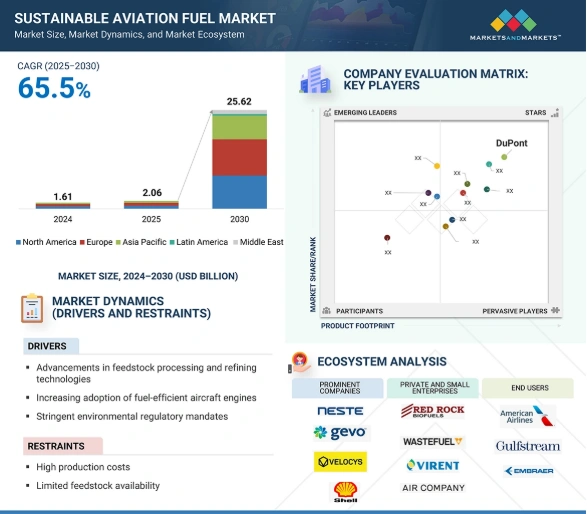
Credit: Markets and Markets
Metafuels offers Alternative Aviation Fuel Technology
Metafuels is a Swiss startup that develops alternative fuels for aerospace operations. The startup’s proprietary technology, aerobrew, converts green methanol into sustainable aviation fuel (SAF).
This technology reduces the carbon footprint by up to 80%, is environmentally friendly, and is also highly scalable. Metafuels thus enable aerospace companies to accelerate the adoption of carbon-efficient alternative fuels.
Maeve Aerospace enables Electric Aviation
Dutch startup Maeve Aerospace manufactures Maeve 01, an all-electric aircraft. It features a proprietary battery stack, up to 550 km range, and 44 passenger seats. Further, the startup offers a rapid charging technology for its plane completely charges the aircraft in 35 minutes.
This makes Maeve 01 a practical alternative to conventional jets for airline operators.
3. Blockchain & Supply Chain Resilience: Aerospace & Defense Supply Chain Disruptions Up 35% YoY
The aerospace supply chain spans many suppliers and parts. Boeing manages roughly 6500 suppliers across 100 countries. A commercial aircraft such as the Boeing 737NG contains about 600 000 individual components. Each part must be forecasted, produced, tracked, and delivered within tight global timelines. This complexity introduces risks that blockchain aids in reducing by providing transparency and traceability.
Further, disruption rates continue to climb. Resilinc EventWatchAI reports a 35% year-over-year increase in aerospace and defense supply chain interruptions, from 9188 disruptions in 2023 to 12 356 in 2024. Additionally, the US Department of Transportation estimates that unapproved parts worth up to USD 1 billion remain in warehouses across airlines and distributors.
In response, aerospace companies have started using blockchain to improve visibility across the production and distribution chain. Modern systems create transparent and permanent ledgers that document each stage of aircraft manufacturing and assembly.
Several integrated technologies support these systems. Smart contracts execute processes when specific conditions are met. Biometric identity checks confirm the credentials of personnel handling aircraft components.
Besides, IoT systems use tamper-resistant cryptoseals and physically unclonable functions to verify part authenticity. Real-time data capture also replaces PDFs with actual form inputs that reduce delays and errors.
Honeywell plays a key role in this shift. Its GoDirect Trade platform streamlines aircraft parts transactions. The company records every manufacturing and repair event on blockchain, including the associated airworthiness certificates.
Moreover, analysts expect the aviation blockchain market to reach USD 3.3 billion by 2032, at a CAGR of 18.9% between 2024 and 2032.
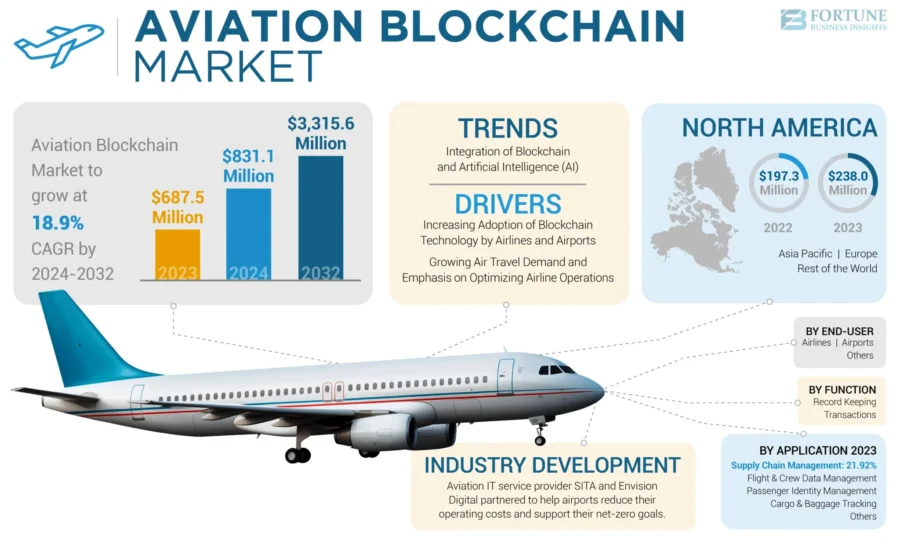
Credit: Fortune Business Insights
VeriTX simplifies Digital Supply Chain Tracking
VeriTX is a US-based startup that makes a platform to regulate aerospace supply chains. It allows aerospace companies to digitize end-to-end supply chain operations.
Moreover, all the actions are recorded in blockchain-based digital records, which improves process traceability. This data allows companies to leverage predictive and prescriptive maintenance as well as enable reverse forensics upon incidents. As a result, the startup reduces operational and maintenance costs.
CarbonFly develops Blockchain-based Book & Claim Platform
Italian startup CarbonFly operates a blockchain-based book and claim platform that tokenizes sustainable aviation fuel (SAF) certificates. It connects aviation fueling networks into a unified digital registry built on an energy-efficient blockchain.
Through this system, air service providers and fuel distributors issue SAF certificates. These tokens become available for purchase and reward-based use across the travel and tourism sector.
The platform automates environmental benefit exchanges and tracks Scope 3 emissions linked to flights. This structure supports transparent reporting and aids in mitigating aviation’s climate impact.
4. Autonomous Aircraft Technology: Market to Reach USD 54.7 B by 2034
Human error remains a major factor in aviation incidents. The 2024 IATA Annual Safety Report recorded seven fatal accidents among 40.6 million flights, resulting in a fatality risk of 0.06. In response, industry experts are prioritizing autonomy to reduce unpredictable variables and improve operational reliability over time.
Autonomous flight also lowers costs by removing pilot-related expenses and optimizing air traffic operations. The Intelligent Autopilot System (IAS) exemplifies these advances, using artificial neural networks to learn from experienced pilots and perform full-flight operations independently. It manages all phases of flight, including takeoff, climb, cruise, navigation, descent, approach, and landing. It even operates under adverse weather conditions such as turbulence, crosswinds, wind shear, and sudden gusts.
Modern autonomous aircraft rely on sensor fusion technologies that combine data from multiple sources to ensure precise navigation and situational awareness. These include LiDAR for environmental mapping, inertial navigation systems for GPS-denied operation, optical cameras for visual recognition, and motion sensors for position tracking.
NASA recently demonstrated autonomous drone flights beyond visual line of sight, using communications systems and path planning algorithms to avoid obstacles and coordinate airspace usage without human oversight.
Boeing continues to invest heavily in autonomous aircraft development. It allocated USD 450 million to Wisk Aero’s electric vertical takeoff and landing (eVTOL) project.
The broader market reflects this momentum, with autonomous aviation projected to grow at a compound annual rate of 22.1%, potentially reaching USD 54.7 billion by 2034.
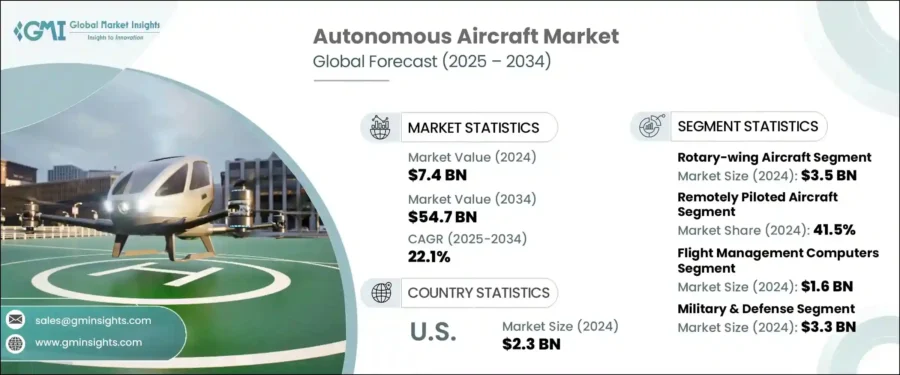
Credit: Global Market Insights
Skydweller Aero develops Autonomous Flight Technology
Skydweller Aero is a US-based startup that makes perennial flight technology through its solar-powered autonomous flight system. By leveraging AI, it performs autonomous waypoint navigation and guides the aircraft through set points.
The aircraft runs on solar power and is also retrofitted with advanced climate and data analysis modules to successfully maneuver in varied weather conditions. It assists in telecommunication, geospatial analysis, and emergency scenarios without human intervention or refueling.
Psyche Aerospace builds an Autonomous eVTOL Drone
Brazilian startup Psyche Aerospace creates autonomous drones and robotic systems. Its Harpia P-71 and Hexa Harpy drones manage precision spraying and solid dispersion to maintain consistent coverage across varied crop conditions.
The startup also produces fixed-wing drones such as Sabiá for aerial mapping and Carcará for monitoring field incidents, including fires and intrusions. At the core of its technology, the Turing AI system processes real-time data to generate insights that inform decisions.
5. Immersive Technologies: VR Cuts Training Time by 75%
The training expenses remain a major factor behind immersive technology adoption. Traditional aviation training involves high operational costs, limited access to full-motion simulators, and scheduling hurdles for flight time. VR offers a practical alternative.
Boeing reported reducing individual training time by 75%. Besides, the US military cut its completion time from one year to four months.
Safety plays a critical role in aerospace training, as roughly 20% of rotorcraft accidents occur during instructional flights. Immersive technologies provide risk-free environments where trainees are able to rehearse emergency procedures and complex maneuvers with no physical danger.
Astronauts also train entirely in VR using Varjo headsets with human-eye resolution. These simulations replicate all mission phases from pre-launch to docking to landing and allow crews to read cockpit displays and respond to safety-critical scenarios with high precision.
In parallel, augmented reality enhances pilot performance by overlaying flight data through head-mounted displays. This reduces operational errors and improves decision-making.
Further, extended reality (XR), which blends VR, AR, and mixed reality, supports engineering and design workflows. Bell cut its FCX-001 helicopter development cycle from up to seven years to six months using Unity software and HTC VIVE for full-scale visualization.
Moreover, CAE committed CAD 1 billion to immersive aerospace technologies, backed by CAD 340 million in government support.
Looking ahead, analysts project the global aerospace and defense VR market will reach USD 3.63 billion by 2032, expanding at a CAGR of 17% from 2024 to 2030.
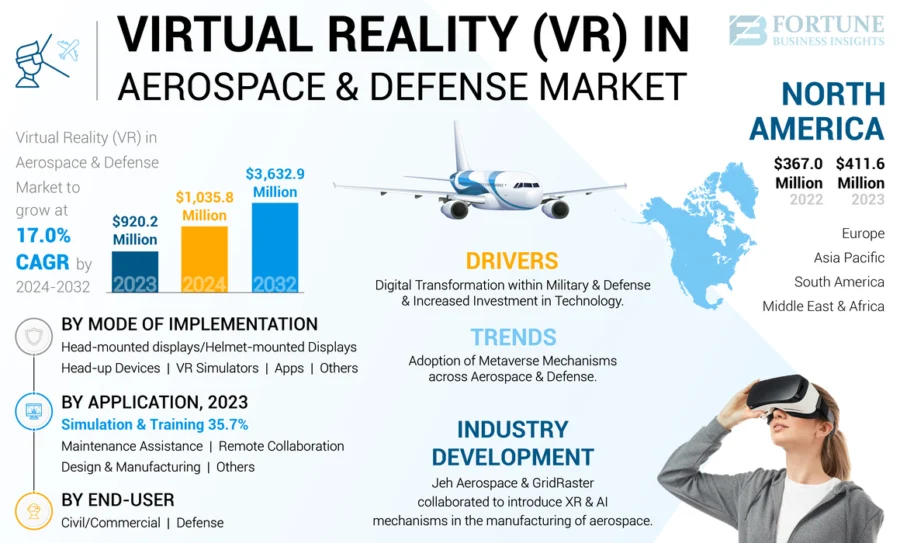
Credit: Fortune Business Insights
Illumia Labs enables Aircraft Maintenance
Canadian startup Illumia Labs develops a simulation platform for technicians and engineers to refine maintenance skills on virtual aircraft. The platform offers immersive training modules and interactive scenarios that enable users to diagnose and resolve mechanical issues in a digital environment.
It uses AI-driven analytics and realistic simulations to enhance technical proficiency, reduce human error, and minimize aircraft downtime. Illumia Labs improves operational efficiency in the aerospace sector by providing a scalable and cost-effective training solution that ensures precision and compliance in aircraft maintenance.
Fyr offers Augmented Flight Glasses
US-based startup Fyr provides a head-mounted AR-based visualization system to augment the vision of pilots. The startup’s solution allows pilots to visualize their surroundings and assists them during flight simulations and training. The glasses provide a 3D field of view and additional situational awareness.

6. Cybersecurity Innovations: Annual Cybercrime Losses Estimated at USD 1 B
Cybersecurity incidents in aerospace have surged. Between January 2024 and April 2025, the aviation sector saw a 600% year-on-year increase in attacks. During this period, 27 major incidents involved 22 ransomware groups. Credential theft and unauthorized access accounted for 71% of cases.
The International Air Transport Association estimates that annual losses from cybercrime amount to USD 1 billion.
In response, government agencies have introduced stricter cybersecurity requirements. The FAA’s Advisory Circular (AC) 119-1 and EASA’s guidelines mandate Aircraft Network Security Programs (ANSP) for connected aircraft operators.
AI-powered tools are also addressing these risks. Predictive analytics identify potential threats early. Machine learning detects anomalies in aircraft systems. Besides, automated vulnerability assessments are completed in minutes, not months.
Industry leaders are also advancing defense strategies. Boeing partnered with Shift5 to improve aircraft cybersecurity using log file analytics and monitoring.
Moreover, Raytheon develops a layered security suite based on Zero Trust principles, which continuously verifies users, hardware, and software.
Looking ahead, the industry is preparing for quantum computing risks. Developers are working on quantum-safe cryptographic algorithms to protect aerospace communications and data links from future threats that could bypass traditional encryption.
The aerospace cybersecurity market is projected to reach USD 59.58 billion by 2032, growing at a compound annual rate of 8.45% from 2024 to 2032.
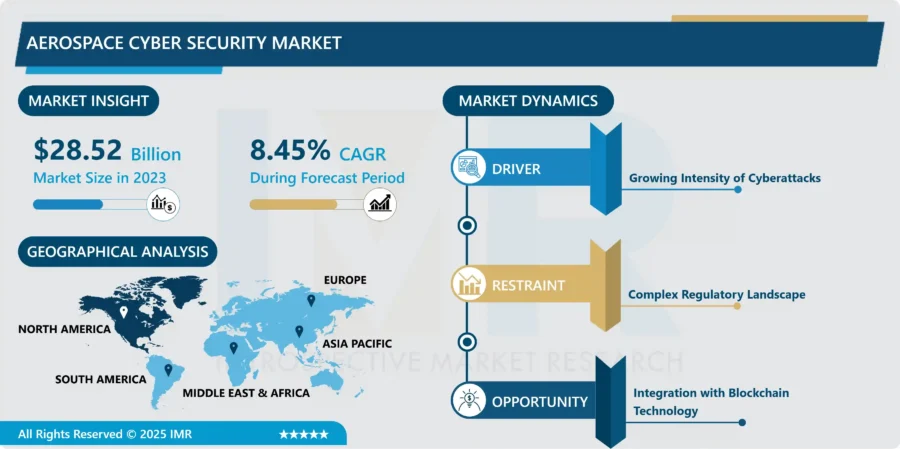
Credit: Introspective Market Research
Atomus creates Cyber-Infrastructure for Aerospace and Defense
US-based Atomus provides a managed cybersecurity platform to protect sensitive aerospace and defense data and support regulatory compliance. It allows contractors to meet standards such as NIST 800-171, DFARS 7012, and CMMC.
Its Aegis platform combines AI-driven monitoring, real-time threat detection, and automated compliance tools. It secures endpoints, servers, and cloud environments. Installation takes less than 30 minutes and produces system security plans, documentation, and compliance artifacts required for federal assessments.
The p integrates more than 30 tools validated under FIPS 140-2, ITAR-compliant, and FedRAMP moderate authorized. These tools enable maintenance and monitoring of security posture across environments.
Atomus allows aerospace and defense contractors to reduce compliance burdens and strengthen cybersecurity readiness.
ADAM Aerospace provides Advanced Cryptography
US-based ADAM Aerospace builds cybersecurity and blockchain-based data verification systems for aerospace, defense, and government use. It applies cryptography, AI, and distributed ledger technology to secure aircraft systems, manage sensitive records, and verify mission-critical data.
The Zenith 0 platform uses a private blockchain to authenticate and distribute data across a shared network. This approach supports data integrity, traceability, and fast audit preparation.
To support real-time decisions, the Trident engine analyzes structured and unstructured datasets through secure AI-powered processing. It applies across multiple industries where data security is essential.
In addition, ADAM Aerospace offers BASE, a SaaS platform that digitizes and organizes military personnel records. It serves both active duty members and veterans through a flexible archive system.
The startup’s technologies simplify secure data exchange, reduce compliance tasks, and improve reliability across aircraft, satellite communications, and weapons systems.
7. Advanced Materials and Manufacturing: Each Kg Cuts 25 Tons of CO₂ Over Aircraft Life
Weight reduction continues to drive the adoption of advanced materials in aerospace. Each kilogram saved prevents up to 25 tons of CO₂ emissions over an aircraft’s lifetime.
Modern aircraft reflect this shift through extensive use of composites. For example, the Boeing 787 and Airbus A350 are 50-53% composite by weight. As a result, they reduce operating costs, fuel consumption, and emissions by approximately 25%.
Traditional manufacturing methods generate significant material waste. Utilization rates often fall between 2-5%, rarely exceeding 10%.
Carbon fiber reinforced polymers (CFRP) dominate aerospace composites. They represent about four-fifths of the global market. These materials offer strong strength-to-weight ratios, thermal resistance, and fatigue performance. They are key for primary aircraft structures.
Further, smart materials are transforming structural monitoring. They respond to environmental changes and support real-time health tracking, predictive maintenance, and adaptive performance.
Digital manufacturing also introduces new capabilities. Digital twins replicate physical components to optimize production and enable predictive maintenance. Meanwhile, machine learning improves quality control and automates vulnerability detection. Besides, quantum computing models material behavior at the molecular level.
Sintavia received a USD 10 million investment from Stifel North Atlantic AM-Forward Fund to expand aerospace component production.
Moreover, the global aerospace composites market is expected to grow from USD 46 billion in 2025 to USD 110 billion by 2035. This reflects a projected CAGR of 9% over the forecast period.
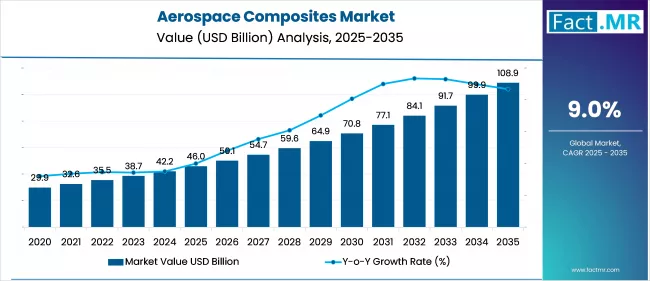
Credit: Fact.MR
Dark Art Composites makes Carbon Fiber Components
UK startup Dark Art Composites manufactures composite structures for spacecraft, satellites, and ground station systems. It uses advanced materials and precision techniques to produce lightweight, high-strength components. These include structural surfaces, brackets, enclosures, and support elements.
The startup fabricates primary and secondary parts through resin infusion and out-of-autoclave curing. These methods improve dimensional stability and mechanical performance. It also integrates active features such as built-in heating elements to support de-icing and frost mitigation.
Dark Art Composites ensures material compatibility with extreme environments. It incorporates electromagnetic transparency and thermal control into custom designs. As a result, its components reduce weight, support fuel efficiency, and optimize payload capacity.
Spantrik advances Reusable Launch Vehicles
Indian startup Spantrik builds reusable launch vehicles and propulsion systems to support sustainable and cost-effective space access. It designs composite aerospace structures using filament winding, resin infusion, and vacuum bagging to balance strength and weight.
Its rocket, Raven, is a medium-lift launch vehicle powered by five LNG-LOX engines. These engines offer deep throttling and restart functions to enable payload delivery of up to 22 000 kg to low Earth orbit. Both stages of Raven return to the launch site, which limits refurbishment and allows for a 24-hour turnaround between missions.
Spantrik also develops autonomous control and precision landing through Leapfrogger, a vertical takeoff and landing demonstrator. Leapfrogger uses the reusable Eureka engine, which produces 5 kN of thrust and supports multiple hop tests.
Spantrik lowers launch costs and supports in-space logistics for orbital and planetary missions.
8. Advanced Air Mobility (AAM): 30 000 eVTOLs Projected by 2045
Urban congestion remains a key driver of advanced air mobility. By 2035, over 800 cities will exceed one million residents, representing more than 2.5 billion people. As traffic challenges grow, cities seek alternative transport solutions.
Battery technology improvements support this shift. Solid-state batteries deliver 450-550 Wh/kg, which offers 90% higher energy density than earlier lithium-ion models. Flight tests show 48-minute missions on a single charge to meet profitability targets for intercity shuttle services.
AAM also includes drones for hyperlocal deliveries and emergency services. Supersonic and hypersonic technologies are also gaining attention to reduce long-distance travel time.
Funding in the sector peaked at USD 6.8 billion in 2021 but declined to USD 3.9 billion in 2023 and USD 2.5 billion in 2024 to date. Despite this drop, eVTOL manufacturers have raised about USD 13 billion since 2019.
Eve Air Mobility projects 30 000 eVTOL aircraft in service by 2045. These vehicles could support three billion passengers annually and generate USD 280 billion in revenue.
Besides, the global AAM market is expected to reach USD 57.96 billion by 2032, growing at a CAGR of 21.3% from 2024 to 2032.
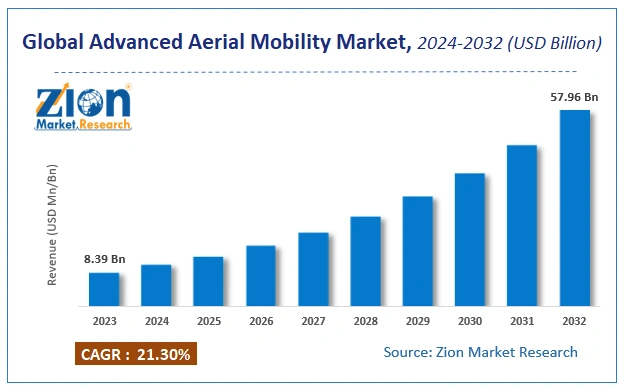
Credit: Zion Market Research
Tetra Aviation provides eVTOL Technology
Japanese startup Tetra Aviation develops eVTOL-based single-seat flying crafts.
The startup’s commercial aircraft platform, Mk-5, assists valuable personnel such as doctors and first responders to be transported to emergency areas. They include disaster locations where mobility is restricted.
Hermeus offers Hypersonic Flights
Hermeus is a US-based scaleup that develops hypersonic aircraft. The startup’s proprietary hypersonic engine, Chimera, reaches Mach 5 speeds. Hermes’ other aircraft, Halcyon and Quaterhorse, are hypersonic passenger and engine performance testing aircraft.
The startup’s flight technology thus allows airline operators to reduce flight times for long-haul air travel as well as increase safety.
9. Additive Manufacturing Transformation: Market to Reach USD 9.87 B by 2029
Additive manufacturing has shifted from prototyping to full-scale production of flight-critical components. GE Aviation’s LEAP fuel nozzles illustrate this transition. The company produced 100 000 nozzles, each consolidating 20 separate parts into one and reducing weight by 25%.
The aerospace and defense sector relies on several additive manufacturing technologies. These include direct metal laser sintering, fused deposition modeling, continuous liquid interface production, stereolithography, and selective laser sintering. Each method supports different material and design requirements.
Investment in metal additive manufacturing is gaining momentum. Recent funding rounds totaled approximately USD 650 million across 40 deals.
Stratasys received USD 120 million from Fortissimo Capital. Additionally, Firehawk Aerospace raised USD 60 million in a Series C round led by 1789 Capital.
The market for aerospace and defense additive manufacturing is expected to grow rapidly. Analysts project it will reach USD 9.87 billion by 2029, with a CAGR of 17.4%.
Wayland Additive advances Aerospace 3D Printing Machines
Wayland Additive is a UK-based startup that develops 3D printing machines for aerospace manufacturing. The startup’s electron beam additive manufacturing (EBAM) process, NeuBeam Metal AM, allows end-users to develop hard-wearing and high-temperature materials.
This enables aerospace companies to develop stronger and lighter parts such as turbine blades, structural parts, and boosters, reducing flight weight. Consequently, it lowers fuel consumption and emissions while optimizing long-term operational costs.
NematX develops Liquid Crystal Polymer Technology
Swiss startup NematX makes Nematic 3DP, a 3D printing polymer technology for aerospace applications. It combines proprietary part design algorithms and high-precision 3D printing hardware.
Through this, NematX creates parts from liquid crystal polymers (LCP) that feature high thermal resistance and greater mechanical strength than polyether ether ketone (PEEK). This allows aerospace manufacturers to develop precision lightweight components and improve spacecraft performance.
10. Commercial Space & Defense Acceleration: Global Space Economy to Reach USD 1.8 T by 2035
The commercial space and defense industries are expanding quickly. This growth stems from technological innovation, shifting geopolitical dynamics, and new market opportunities.
The global space economy is expected to grow to USD 1.8 trillion by 2035. Commercial satellite services lead the market, generating USD 293 billion in the last year and accounting for 71% of total space activity.
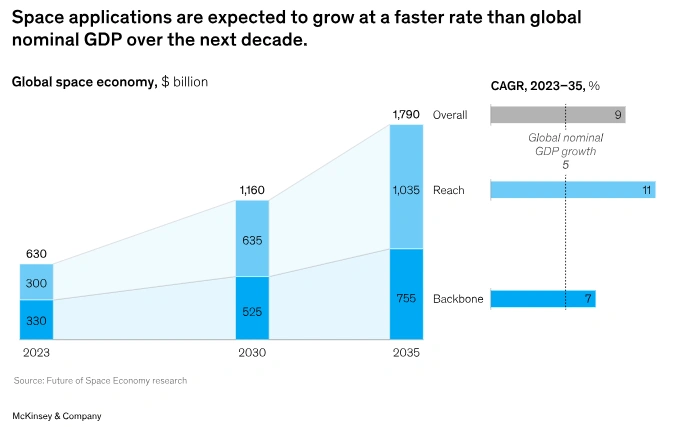
Credit: McKinsey
Reusable rocket technology has changed the economics of space access. SpaceX’s Falcon 9 rockets have lowered launch costs compared to expendable vehicles. This shift supports more frequent missions. In the last year, 259 launches deployed 2695 satellites.
Low Earth Orbit (LEO) satellite constellations continue to reshape space infrastructure. The number of active satellites grew from 3371 in 2020 to 11 539 by the end of 2024. Mega-constellations like Starlink lead this expansion, operating nearly 7000 satellites.
Additionally, defense spending also increased. In 2024, global defense budgets rose by nearly 10%, marking the fastest growth rate in four decades.
Satellite technology is advancing in parallel. New systems use lightweight materials, compact electronics, and improved power sources. High-throughput satellites and Very Small Aperture Terminals are improving connectivity while lowering costs.
Further, direct-to-device satellite communication allows smartphones to connect directly to satellites without relying on ground stations.
Voyager Space offers Advanced Space Communication
US-based scaleup Voyager Space operates a space-focused communication system. The scaleup offers an alternative solution to traditional space communication using lasers and radio frequencies (RF).
It enables robust connectivity between ground teams and satellites or spacecraft for improved operations. Additionally, Voyager Space develops custom digital communication solutions tailored to specific missions.
Stratotegic builds High Altitude Platform Stations (HAPS)
Canadian startup Stratotegic develops autonomous high-altitude platforms and navigation systems for aerial missions in surveillance, communication, and data relay. It deploys solar-powered, lighter-than-air systems that operate in the stratosphere. These platforms carry payloads and include onboard edge computing and communication modules.
The startup’s Stratotegic Navigation system integrates command and control, altitude regulation, wind modeling, and path optimization. This system improves station keeping and waypoint tracking. It relies on proprietary wind models and AI-based path planning to forecast flight paths and support regulatory approval.
Further, an integrated altitude controller maintains vertical positioning under changing stratospheric conditions. This feature enables ensuring consistent mission performance. The autonomous architecture continues operating during communication blackouts. It also allows one operator to manage several vehicles through a simplified ground control interface.
Discover all Aerospace Trends, Technologies & Startups
Quantum computing for aerodynamics, AI copilots, and in-space manufacturing are emerging as competitive differentiators. In parallel, zero-emission propulsion, hypersonic transport, and digital aircraft certification are shaping new directions in aerospace.
Together, these technologies point to a future of faster operations, cleaner propulsion systems, and more connected platforms across the industry.
The Aerospace Trends & Startups outlined in this report only scratch the surface of trends that we identified during our data-driven innovation & startup scouting process. Identifying new opportunities & emerging technologies to implement into your business goes a long way in gaining a competitive advantage.
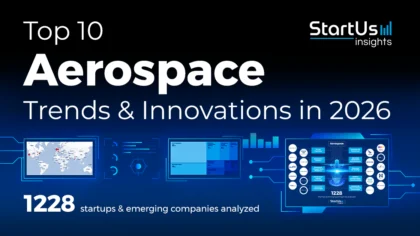

 WATCH THE VIDEO VERSION
WATCH THE VIDEO VERSION 